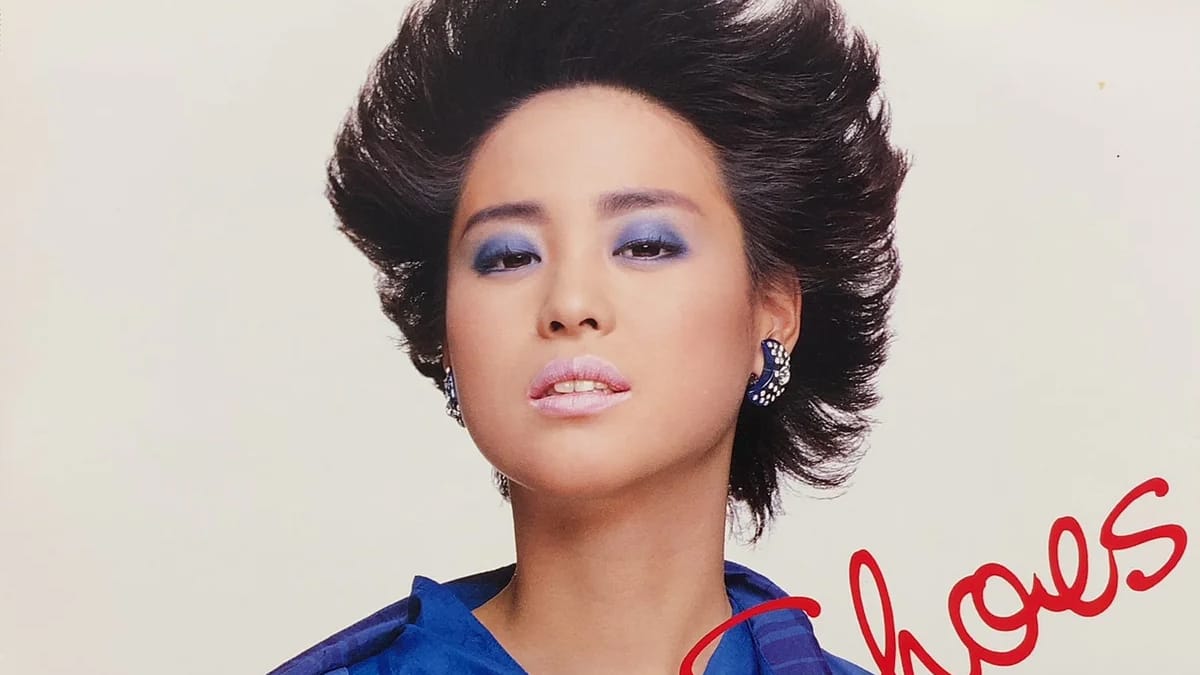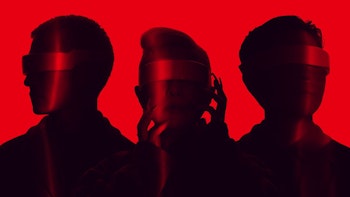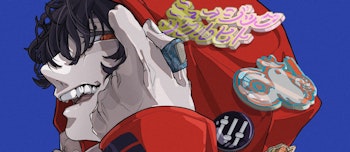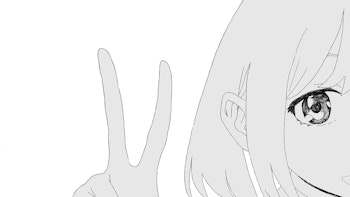
The history of Japanese pop is littered with attempts at crossing over to the Western world. These efforts have been well documented, ranging from the successful ventures of Yellow Magic Orchestra to the not so easy-breezy English-language debut of Utada Hikaru to unmitigated disasters like the variety-show-killing undertakings of Pink Lady. This legacy seems especially relevant in the 2020s, where J-pop has finally enjoyed a sustained push onto the global stage, with songs routinely going viral and artists being able to hold actual tours abroad rather than just yuck it up with comedians.
In looking over this long history, one major idol’s attempts at trying to make it have gone somewhat under-appreciated in the grand arc of Western moves. Seiko Matsuda stands as among the biggest musical acts in her home country, earning the title the “Eternal Idol” because of her longevity in a corner of pop defined by fleeting youth. She’s the singer behind some of the ‘80s most popular hits and is a versatile artist, working with producers ranging from Eiichi Ohtaki to Haruomo Hosono to Yumi Matsutoya. Nobody loomed larger during this period.
An attempt to tackle the US market made sense — what else could she accomplish at home anyway? What followed was moves into the States lasting nearly 30 years, featuring all-English albums, lesser Wahlbergs and forensic-science-focused TV dramas. It’s one of the most curious cases of an international breakout in Japanese music history worth digging into.
Put Your Dancing Shoes On…Sort Of
By 1985, Matsuda was just six years into her career and already an unstoppable pop force in Japan. She had number-one hits under her belt, awards on her shelf and claims to multiple fashion trends in the country. It was a perfect time to try to explore markets beyond the archipelago.
In June of that year she released “DANCING SHOES,” her first all English single, complete with a video set in New York finding Matsuda really playing up her American efforts…at least when she wasn’t eating ice cream, as featured in one early shot.
The light synth-pop routine featured writing and producing from Western pop makers — including Steve Kipner, who had already produced Olivia Newton John’s hit “Physical” and would go on to strike gold with Christina Aguilera — and reflected sonic trends of the times. Matsuda holds her own in English, with a few clunky verses but largely working with the melody, singing about a wallflower taking the charge to ask a man to dance.
“DANCING SHOES” was to be a taste of her big attempt at an English album, that August’s SOUND OF MY HEART. Recorded in New York with an assortment of American session aces and released as just Seiko, it’s an eclectic collection of songs clearly meant to introduce Matsuda’s singing style to US audiences over sonic backdrops running from balladry to disco to synth-pop (not to mention a cover of the song “Imagination” from Flashdance). Working with a variety of producers and featuring a bonkers set of writing credits — contributions by Bobby Caldwell and Michael Bolton — it’s a solid albeit somewhat straightforward grab bag of ‘80s pop. Yet it certainly could have been a good first impression for listeners on the other side of the world.
Except it wasn’t even released overseas. Despite being conceived as her big Western debut and recorded in NYC, SOUND OF MY HEART only came out in Japan. That’s because of Matsuda’s personal life in 1985 — she suddenly married Masaki Kanda in the spring, prompting her to go on a hiatus for most of the year, curbing whatever ambitions this album had. It and the “DANCING SHOES” single still sold extremely well domestically, but it was ultimately a false start for her international efforts.
The Alright Combination
Five years later, Matsuda was ready to give the whole international expansion experience another go. This time around, she had a partner at the peak of his powers to help introduce the idol legend to a new generation.
“The Right Combination” found Matsuda dueting with Donnie Wahlberg, then on top of the world with New Kids On The Block. It was a savvy move by Matsuda, giving her a link to one of the biggest pop groups on the planet at the time (even if the future Cluedle-Doo seemed a little too into Matsuda in promotional interviews). The song itself is a dreary ballad built for dentist waiting rooms, all schmaltz and Hallmark sentiment, shining no light on what made Matsuda or Wahlberg good pop performers.
If it was a commercial success…sort of varies on your perspective. It hung around the outer edges of the Billboard Hot 100 for a bit, which is noteworthy for a Japanese act, but failed to catapult her further. Subsequent English-language album Seiko leaned harder into hop-scotching dance-pop skirting the border between the fading ‘80s and the emerging ‘90s. I’d personally say it’s most interesting for including “Halfway To Heaven,” which features the double-take-inducing combo of Matsuda working with famed Italian producer Giorgio Moroder. Yet nothing really resonated as Seiko missed the charts entirely, and Matsuda’s first true US push felt like a miss…even to her.
“Sony Japan bought the American company so they would send Japanese artists to America to do something,” she said in a 1996 Billboard interview ahead of her next American adventure. “My feeling was ‘OK, I’ll do this,’ but it was not strong, like now. I learned so many things from that experience and now is the time to do this. I’m ready.”
A Little More Time
One of the challenges facing Matsuda in her previous attempts to make a US break was the disconnect between her idol sound in Japan and efforts to adapt to radio-ready styles for the international market. With SOUND OF MY HEART, she tried for a balance, while Seiko saw her tiptoe towards more then-on-trend developments while still having a foot in the shimmering pop she came up with.
For her 1996 all-English album Was It The Future, she tossed aside whatever sound was her Japanese foundation in favor of R’n’B.
It was an intentional move away from the “cute and happy music” she made in Japan, according to an interview with CNN from the time focused on Japanese stars trying to make it in America. The sound of and video for first single “Let’s Talk About It” makes that crystal clear. It’s a ‘90s groove moving at a more laid-back, come-hither pace that allows Matsuda to reveal a new angle on her singing. The accompanying clip, meanwhile, finds an artist previously known for an innocent image going sexy alongside a narrative about…a guy in a prison using VR to stare at her? Very ‘90s in concept, but a bold shift in how Matsuda was viewed, even compared to her last two English offerings.
That decision, though, was a good one artistically. Was It The Future is easily her best crossover musically, and while it wasn’t a commercial success, listening to it today feels more like stumbling across a gem rather than a curio. R’n’B suits her English singing much better than the jittery synth-pop defining her previous two English full-lengths, both in allowing her space to enunciate and coming in at a speed that actually suits her delivery quite well. The ballads still feel too syrupy sweet, but everything else is a solid approach to the style imagining an alternate reality Matsuda who could make this work for her.
Uncharted Area
I have got to say at this point…Seiko Matsuda has moxy for still chasing after an international hit nearly 20 years after her first go. With 2002’s area62, she offered up her last stab at the American dream.
To be fair, the pop superstar flashes a lot of self-awareness when it comes to this, her fourth English-language album. In the above Japanese promo clip, she explains how the title refers to the feeling of being an “alien” in the United States, riffing on Area 51 and changing the number to the year she was born (1962). Sold only in US Tower Records and HMV outposts (plus exclusively on Japanese tour stops), area62 lacks the pizazz and media blitzes of previous releases. It’s…just kind of there. Except online, as this is the one release that’s near impossible to find legally, as it appears to not even be on sale in the Apple Music Store.
Which might be for the best, as the available songs seem a little too all over the place. This is Matsuda embracing a Y2K-ish club palette, with hints of rave and house lurking in the mix. It can be intriguing, especially on opener “ALL TO YOU” which fuses traditional Japanese sounds to swift floor-focused ecstasies. Matsuda herself, though, doesn’t really fit with this sound, and what I’ve heard seems muddled. If Was It The Future accidentally found the star operating in a new-to-her sound fitting her skill set just right, area62 sees her trying to get with the times and being clearly out of step with them.
This should be the end of Matsuda’s American entertainment story…but there’s one more instance to note, arguably her most successful by a wide margin.
Screen Star
In the grand scheme of a career like Matsuda’s, a brief cameo in a FOX Network crime drama about forensics is but a blip. Yet her 2010 appearance on the popular series Bones as a reporter stands as one of her biggest crossover moments ever.
Prior to this moment, Matsuda had an odd series of appearances in American media. She’s a tourist in the asteroid-focused disaster film Armageddon, popping up in a taxi cab to express her desire to shop until New York City gets pelted by space rocks. She’s very briefly in Drop Dead Gorgeous speaking Japanese, before being berated by her movie father. She’s not only the voice of a schoolgirl in the King Of The Hill episode where the Texas family goes to Tokyo, her song “Kimono Beat” plays prominently at one point. For a certain era of Americans, Matsuda was…surprisingly everywhere, even if we didn’t realize it.
The Bones cameo serves as a final televised cherry on top. Matsuda remains amazingly popular in Japan, and she never rejected America even after four swings and misses. She’s performed at special concerts in the states, including a Quincy Jones’ gig at the Hollywood Bowl in 2011, and she’s actually released a handful of English-language jazz cover albums. Yet appearing on this FOX show — which, it should be noted, was beloved in Japan during the 2010s, so this was also a nod to that fanbase — was notable, and a nice closing chapter to one of the wilder efforts at breaking America ever.







